The Yellow Train in French Pyrenees is a local commuter train running through the French Pyrenees’s national park from Villefranche-de-Conflent to Latour-de-Carol/Enveitg at the Spanish border. It runs on a 1,000 mm (3 ft 3 3⁄8 in) gauge railway. Construction started in 1903, the section to Mont-Louis was completed in 1910, followed by an extension to Latour-de-Carol/Enveitg in 1927. The trains are powered by electricity at 850 volts DC, supplied by the third rail.
The line is single-track with passing loops at, for example, Mont-Louis-La-Cabanasse. It follows an impressive 63 km route along the national railway line. From Villefranche-de-Conflent, the lower terminal of the train route at an altitude of 427 meters, the railway rises through scenery to its summit at an altitude of 1592m above sea level. The pinnacle is at the highest railway station Bolqure Eyne in France and then falls through the Pyrenees’ valley to the final station at Latour de Carol.
The main stops of the Yellow Train
The train stops in many towns and villages. Among them, three are of interest.
- Villefranche-de-Conflent, where the train starts. It is a UNESCO city hidden in the Pyrenees.
- Mont-Louis La Cabanasse with a UNESCO site.
- Latour de Carol Envetic, a place hardly known for tourists but probably well-known among train lovers worldwide.
In most stations, the train stops at a station when someone requires to get on or off.
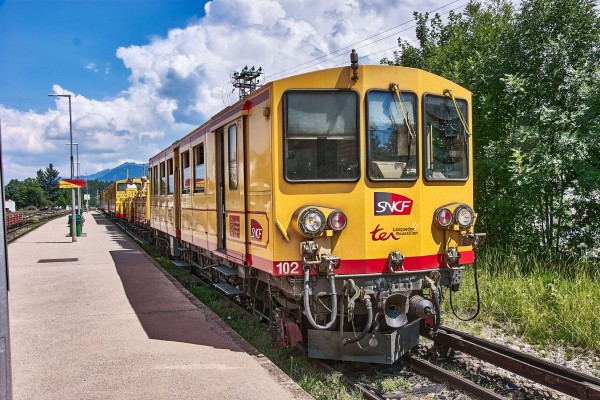
The best part of the Yellow Train route
The best part of the route is between Villefranche-de-Conflent to Monte Louis. The Yellow Train runs several times a day between the two places, but less frequently to the Spanish border, Latour de Carol Envetic.
The journey for the entire route is at least 3 hours. Unless you are using the line for traveling purposes between Spain and France, it is unnecessary to take the return journey for sightseeing. What we did was take the best part of the Yellow Train route.
Our plan for the Yellow Train Ride
It was in the summer when we took the ride. To better utilize the traveling time, we drove to Villefranche-de-Conflent in the morning around 8:00 and bought return tickets to and from Mont-Louis La Cabanasse.
Since our train would leave at lunchtime, we utilized the time by driving to Mont-Louis La Cabanasse and visited the place. On the way, we stopped at several places to catch the bridge and gorge views, especially the unusual rail suspension bridge at Pont Gisclard between Sauto and Planès. The roads are well-maintained and had less traffic even during the summer holiday times.
After the visiting, we drove back to Villefranche-de-Conflent and boarded our train to Mont-Louis La Cabanasse. Our train returned to Villefranche-de-Conflent in the late afternoon, when it was the best time to see the place because most tourists were leaving.
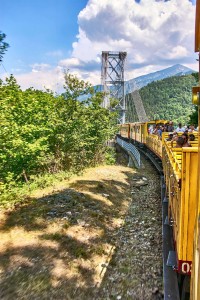
Scenic sites along the route
Pont Séjourné and the Gisclard suspension bridge
The Yellow Train crosses over two bridges, the Pont Séjourné, and the Gisclard suspension bridge. But we could only capture a partial view of them from the train. You can, however, drive there to enjoy the views.
Mountains, valleys, tunnels, and gorges
During this unique journey, the train climbs up the steep mountains and down to the valleys, crosses enjoyable mountainous landscapes, and passes many tunnels. The best part of the train is its open compartments for passengers to see the surrounding natures and engineering objects along the route. It is a very scenic ride through the mountains and gorges.
Panoramic views from the standing platforms
On the way up, the train drove slowly. But on the way down, it rolled very quickly. Between the train’s compartments, there are platforms where we enjoyed spectacular panoramic views and took some scenic pictures.
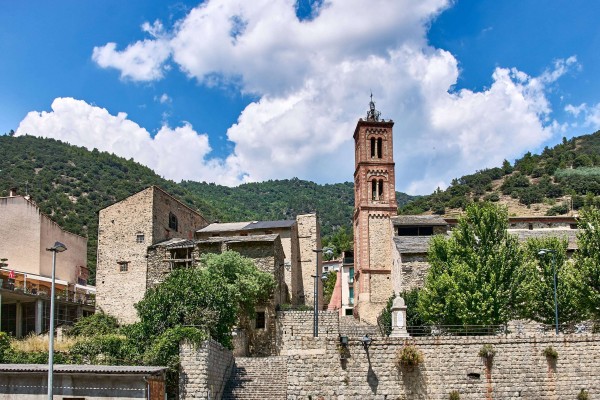
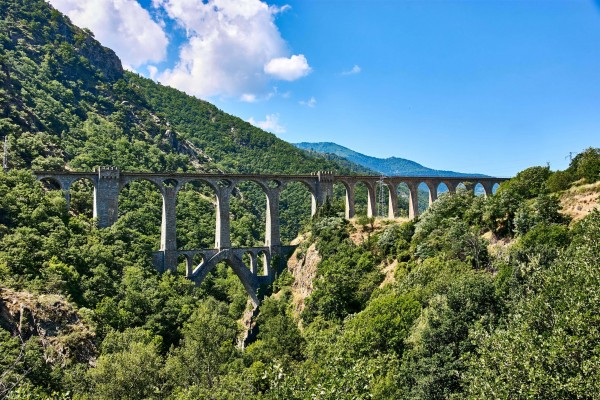
Is it worth to take the Yellow Train?
The Yellow Train is a symbol of Catalonia. Historically, it linked Cerdanya’s high plains to the rest of the region. Today, the Yellow Train of the Pyrenees is one of many tourist attractions in France. It offers a unique journey that ranks among the top railway routes in the world.
Besides the scenic views, it is also famous among rail lovers for its connection with three different rail systems, the standard gauge used by the French rail system, the Iberian gauge of the line starting at Latour-de-Carol/Enveitg, and the metre gauge of the Yellow Train. If you take the Yellow Train to the end station, you will see the three systems at Latour-de-Carol/Enveitg.
Furthermore, it is possible to combine the visit to the town UNESCO towns mentioned above. The activity is suitable for families with kids as well.
Therefore, it is worth to take the Yellow Train ride when you are in the area since it is a nice thing to do with the whole family.
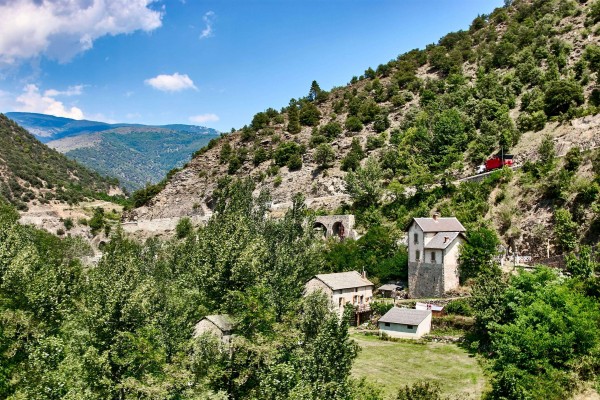
Tips for Yellow Train Ride
- The train schedule changes from time to time. Please always check the online timetable.
- In the summertime, the first train in the morning is usually busy and full. You probably won’t get tickets if you are not early enough. So allow yourself to have enough time to arrange the tickets.
- The Yellow Train runs all year round, but its timetable has seasonal variations. Make sure to buy tickets at the station ticket offices.
- Take a Yellow Train leaflet with you. Prepared by the Regional Natural Park of the Catalan Pyrenees, it has descriptions of all sites.
- The Pyrenees is a top holiday destination for the locals. But if you have a holiday in Barcelona, you have the chance to join three countries in 1 day small-group tour and explore three countries (Spain, Andorra, and France) in the Pyrenees.
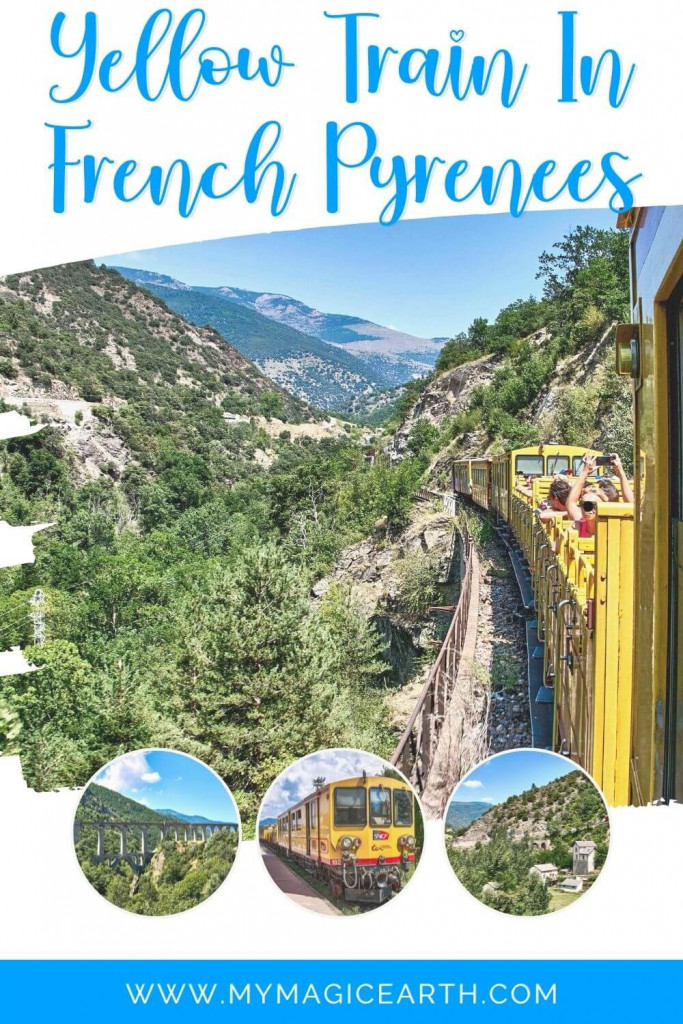


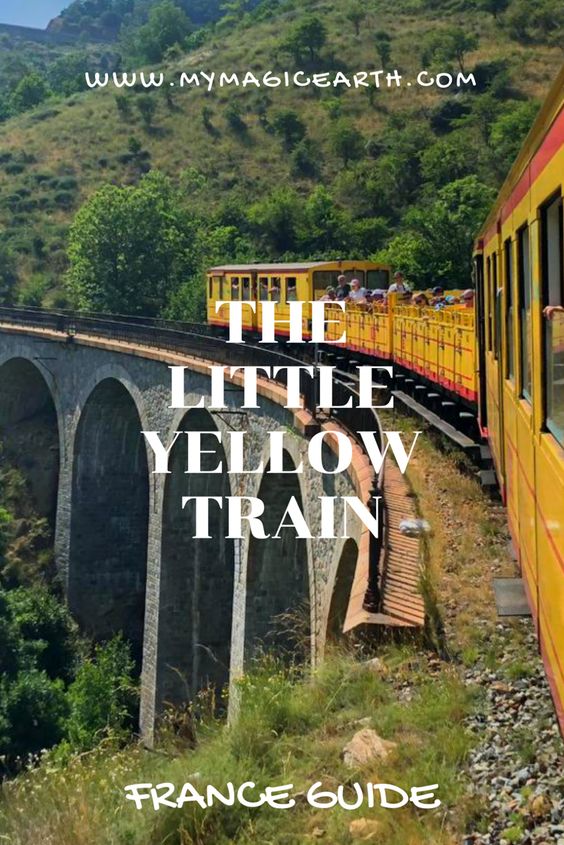

Loved your article and it makes me wanna go there. I have just arrived in toulouse with coivid quarantine and I just wanna go to the mountains. Is this place reachable by bus or train, I don’t have any personal vehicle to travel.
Hi Divya,
Thanks for reading!
This place is quite far from Toulouse. If you don’t have a car, it is not possible to go there in one day. The train starts at Villefranche-de-Confleunt. There are local buses to go there, but it takes very long form the neighbouring town. The nearest big town to Villefranche is Perpignan. You can check this website to find the connection: https://www.rome2rio.com/s/Perpignan/Villefranche-de-Conflent.
Would love to do this , is it possible to by a 1 way ticket? Also can you stop and stay the night in one of the small villages and continue the next day ? We like the small medieval villages , the smaller the better , can you suggest any for me to research please. Thankyou
Hi Heather,
Yes, you can buy one way ticket. But if you get off one of the small village, the ticket is not valid for the next day or the next ride.
I would suggest you to take a look at Mont-Louis La Cabanasse, it is one major stop of the Yellow Train. I have a post about it. It is also a UNESCO town and has easy access to the other places.
https://mymagicearth.com/mont-louis-the-smallest-hilltop-town-in-french-pyrenees
Wow this looks like an iconic train and what a beautiful ride. Loved the post.
Beautiful piece! Makes me want to go there.
Beautiful! I love train travel, and this is so scenic and historic. I’d love to take my family on it one day 🙂
This looks amazing, so much fun. Great pictures too